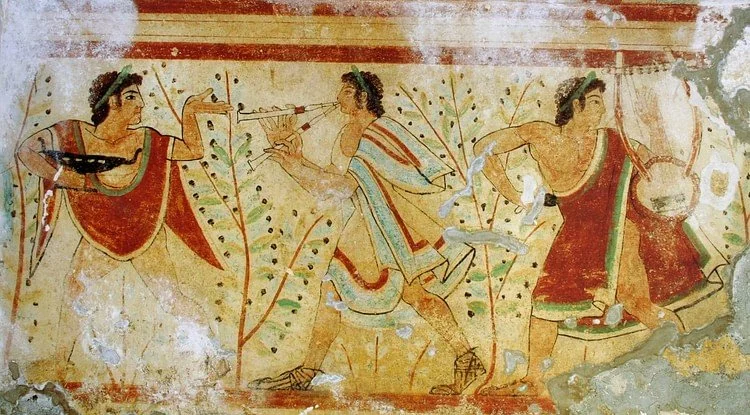Long before the Roman Empire cast its shadow across the ancient world, the Etruscans thrived in central Italy. Flourishing between the 8th and 3rd centuries BCE, this mysterious civilization profoundly influenced the early development of Rome. From monumental architecture and sacred rituals to political institutions, Etruscan culture laid the groundwork for what would become one of history’s most iconic empires.
Architectural Innovation: Foundations of Roman Grandeur
The Romans are often praised for their engineering brilliance, but many of their foundational techniques originated with the Etruscans.
Arches and Vaults: The Etruscans were masters of using the true arch, which the Romans later perfected and used in aqueducts, bridges, and amphitheaters.
Temples: Etruscan temples, with high podiums, wide staircases, and deep columned porches, directly influenced early Roman temple design. The iconic Capitoline Temple of Jupiter in Rome is modeled after Etruscan prototypes.
Urban Planning: The Etruscans introduced systematic town layouts with grid patterns, which later became standard in Roman colonies.
Their advanced understanding of hydraulics and drainage—vital for Rome’s growth on swampy land—also enabled the construction of key infrastructure like the Cloaca Maxima, one of the world’s earliest sewage systems.
Religion and Ritual: Gods, Omens, and the Sacred
Etruscan religion was deeply spiritual and obsessed with the will of the gods, a theme that the Romans eagerly absorbed.
Augury and Haruspicy: The Etruscans practiced divination by reading the flight patterns of birds (augury) and examining animal entrails (haruspicy). These practices became central to Roman state religion.
Pantheon of Gods: While many Roman gods have Greek counterparts, several were borrowed or adapted from Etruscan deities—such as Tinia (Jupiter), Uni (Juno), and Menrva (Minerva).
Sacred Books: The Etruscans left behind texts on religious rituals and divination, known as the Etrusca Disciplina, which Roman priests preserved and consulted for centuries.
Even Rome’s obsession with auspicious omens, public rituals, and temple dedications has strong Etruscan roots, reflecting a shared reverence for the divine in political life.
Political Institutions: Kings, Symbols, and Ceremonies
Rome’s early monarchy, before the Republic, was shaped heavily by Etruscan models of governance and statecraft.
The Last Kings of Rome: Several of Rome’s early monarchs—most notably Lucius Tarquinius Priscus and Tarquinius Superbus—were Etruscan. They introduced public works, temples, and royal rituals that transformed Rome from a village into a city.
Symbols of Authority: Many iconic Roman symbols came from Etruscan political life:
The fasces (a bundle of rods with an axe) symbolized magistrates’ power.
The curule chair, worn by consuls and emperors, was Etruscan in origin.
The toga praetexta (a toga with a purple border) worn by officials and priests echoed Etruscan elite fashion.
Triumph Ceremonies: The Roman triumph, where victorious generals paraded through the city, mirrored Etruscan royal processions that celebrated military power and divine favor.
The Romans would later distance themselves from monarchy, especially after the expulsion of the last king, but the structures and rituals of royal power remained deeply Etruscan at their core.
Art and Culture: Aesthetic Legacy
Beyond politics and religion, the Etruscans contributed richly to Roman art, music, and social customs.
Funerary Art: The Etruscans believed in an elaborate afterlife, and their vibrant tomb paintings and realistic sarcophagi influenced Roman funerary practices.
Entertainment: Chariot racing, gladiatorial contests, and public games—staples of Roman entertainment—have clear roots in Etruscan ritual combat and festivals.
Language and Alphabet: The Etruscan alphabet, adapted from the Greeks, formed the basis for the Latin alphabet, which we use today.
A Civilization Remembered Through Rome
Despite their profound contributions, the Etruscans were eventually absorbed into the Roman Republic, their language lost, and much of their history shrouded in mystery. Yet their fingerprints remain visible across the Roman world—from marble temples to political institutions and religious ceremonies.
Rome didn’t emerge in isolation. It rose on the shoulders of those who came before, and none were more foundational than the enigmatic and influential Etruscans.







